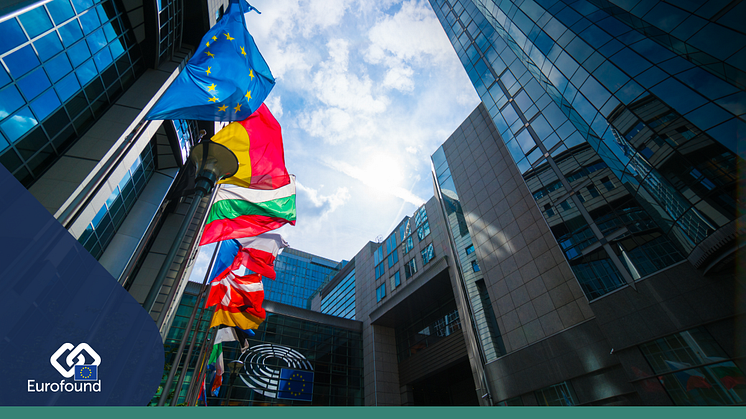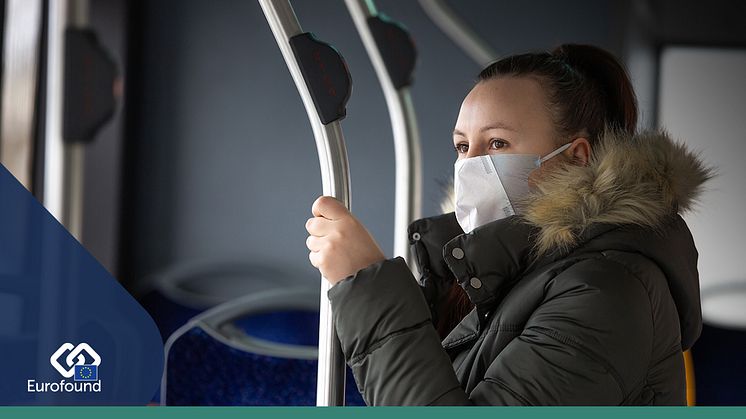
Blog post -
Youth in a time of COVID
Blog by Massimiliano Mascherini
Sign up to watch the webinar at 11:00 am (IST)/12:00 (CET) today: Being young in the COVID-19 pandemic
The exponential growth of COVID-19 cases across Europe this autumn has quickly erased hopes that the virus had been contained and confirmed the surge of another wave of the pandemic. With Member States now implementing new restrictive measures for the second time since March in an attempt to control the virus, the COVID-19 crisis has become a health, economic and social crisis.
Like a modern Kerberos, the gigantic three-headed hound and guardian of Hades, these three faces of the crisis are affecting the various demographic groups in our societies very differently. Among them, young people – for whom the health risks appear to be lower – are being disproportionately harmed economically and socially by the precautions imposed by the lockdowns.
Age-specific trends in Coronavirus deaths have been clear since the beginning of the pandemic. According to the journal Nature, for every 1,000 people under the age of 50 who have been infected, almost none will die. The risk then climbs steeply with age, and for every 1,000 people in their mid-70s or older who become infected, around 116 will die. [1]
These stark statistics confirm the acute danger of the virus to the lives of older cohorts. However, younger generations are much more exposed than the older population to the wider consequences, especially if we look at their employment prospects and the threat to their social and human capital.
Joblessness escalates
Young people are overrepresented in the sectors hit hardest by the restrictions, such as retail, travel and hospitality. According to Eurofound’s ‘Living, working and COVID-19’ survey of Europeans, 11% of respondents aged 18–29 lost their jobs during the pandemic, compared to 8% of workers over 30. These numbers are confirmed by official statistics: according to Eurostat, youth unemployment increased by 2.7 percentage points from 14.9% in March 2020 to 17.6% in September 2020, while among the adult population (aged 25 and over), it increased by 0.8 percentage points, from 5.7% to 6.5%.
Furthermore, young people are more likely to be on temporary contracts and have atypical forms of work, meaning their labour market insecurity is much greater than that of older age groups. According to the Living, working and COVID-19 survey, 12% of young people considered it ‘very likely’ or ‘rather likely’ that they would lose their job in the following three months; only 9% of older working respondents shared the same worry. The new lockdowns and restrictions on movement that some Member States are imposing could hit young people even harder and leave permanent scars on the employability of a generation who already paid the highest toll in the previous recession.
Learning moves online
The impact of the pandemic on education is also damaging young people’s opportunities to accumulate human capital and skills. The decision to close schools, training centres and universities in March had tremendous repercussions for the productivity and work–life balance of parents, as well as on students and their learning. The rapid move to teaching online – untested and on an unprecedented scale, with much trial and error – exposed the different levels of readiness across countries and schools.
Although it is difficult to estimate how and to what extent the COVID-19 disruptions of traditional education and training provision will affect the accumulation of human capital among the young, pre-pandemic scientific evidence has found a positive correlation between school attendance and test scores. [2] This suggests that the suspension of schooling for 12 weeks, as happened in many countries in spring 2020, may have more than trivial effects in terms of skills formation. If the implementation of new restrictive measures in winter is accompanied again by school closures, this could lower the skills of the workforce for an entire generation, resulting in long-lasting consequences for economic output.
Moreover, the closure of schools and the shift to online learning are likely to reinforce inequalities between the most privileged and the most vulnerable. The substantial disparities in knowledge and well-being across families will also affect the help given to children and young people with learning. Young people with supportive families and access to the internet and computers at home will fare better than those without such resources. If Member States do envisage further school closures, the provision of stronger and more tangible support to young people and families to engage in online learning is essential. All young people must have the same opportunity to learn if we are to avoid enlarging the fissures between the most privileged and the vulnerable, which could have dire consequences for the future of this generation.
Social interactions vanish
The restrictions on social gatherings and cancellation of events have had detrimental effects on young people, their social life and their social development. Curbed from going out, meeting their peers, participating in events and community life, young people’s opportunities to develop social networks and strengthen their social capital dried up. Lack of social interaction has also harmed their mental health, the traces of which remained visible even when societies and economies were reopened.
While young people traditionally score much better on mental well-being when surveyed than the rest of the population, the Living, working and COVID-19 survey found that, in April 2020, 55% of young people were at risk of depression, a much larger share than the rest of the population (48%). In July, with the lifting of the restrictions, this share decreased to 48%, but it still was much higher than the 41% recorded among the over-30s. Similarly, despite improving since April, the results on loneliness and tension from the summer wave were more pessimistic for young people than for older respondents. In July, 17% of young people reported feeling lonely, against 12% of over-30s. Regarding anxiety, 22% of young respondents in April and 20% in July felt tense ‘all or most of the time’, against 18% and 13%, respectively, of older people.
These trends in mental health are greatly concerning should strict lockdown measures be repeated and should ring alarm bells over the likely compliance of youth to measures perceived as an ‘invisible prison’.
Given this evidence, there is no doubt that being young in a COVID-19 society means suffering less from the virus and more from the impact of the measures aimed at controlling it.
How to slay the monster?
The COVID-19 pandemic is first and foremost a health crisis that crystallises the dilemma policymakers are facing between reducing contact and saving lives, on the one hand, and allowing people to work, maintaining the economy and minimising the social impact, on the other. While the need to save lives is indisputable, the imposition of strict lockdowns risks causing permanent scars to the employment prospects and the social and human capital of a generation that was already dealt a severe blow by the 2008–2013 crisis – a generation that represents the future of Europe and of its Member States in an increasingly complex geopolitical world. There is a need for governments and scientists to clearly explain the effectiveness of restrictive measures to the population, and the economic and social cost of these measures must be shared among the various demographic groups, with adequate support given to those worst hit. If not, there is a substantial risk that people will increasingly defy the limitations placed on their freedom, rendering lockdown ineffective.
So, while policymakers have the hard task of balancing the health and economic impacts, a full evaluation of the economic and social costs of restricting so much human interaction should be considered before taking this step once again. Our modern Kerberos, the three-faced crisis, will have to be defeated as Herakles did in Greek mythology: all at once. No facet of the crisis can be left to one side; each is assailing a segment of our society, and no one part of the crisis is greater than another.
References
- ^ Nature (2020), The coronavirus is most deadly if you are older and male — new data reveal the risks, 28 August.
- ^ Carlsson, M., Dahl, G. B., Öckert, B. and Rooth, D. (2015), The effect of schooling on cognitive skills, Review of Economics and Statistics, Vol. 97, No. 3, pp. 533–547.



